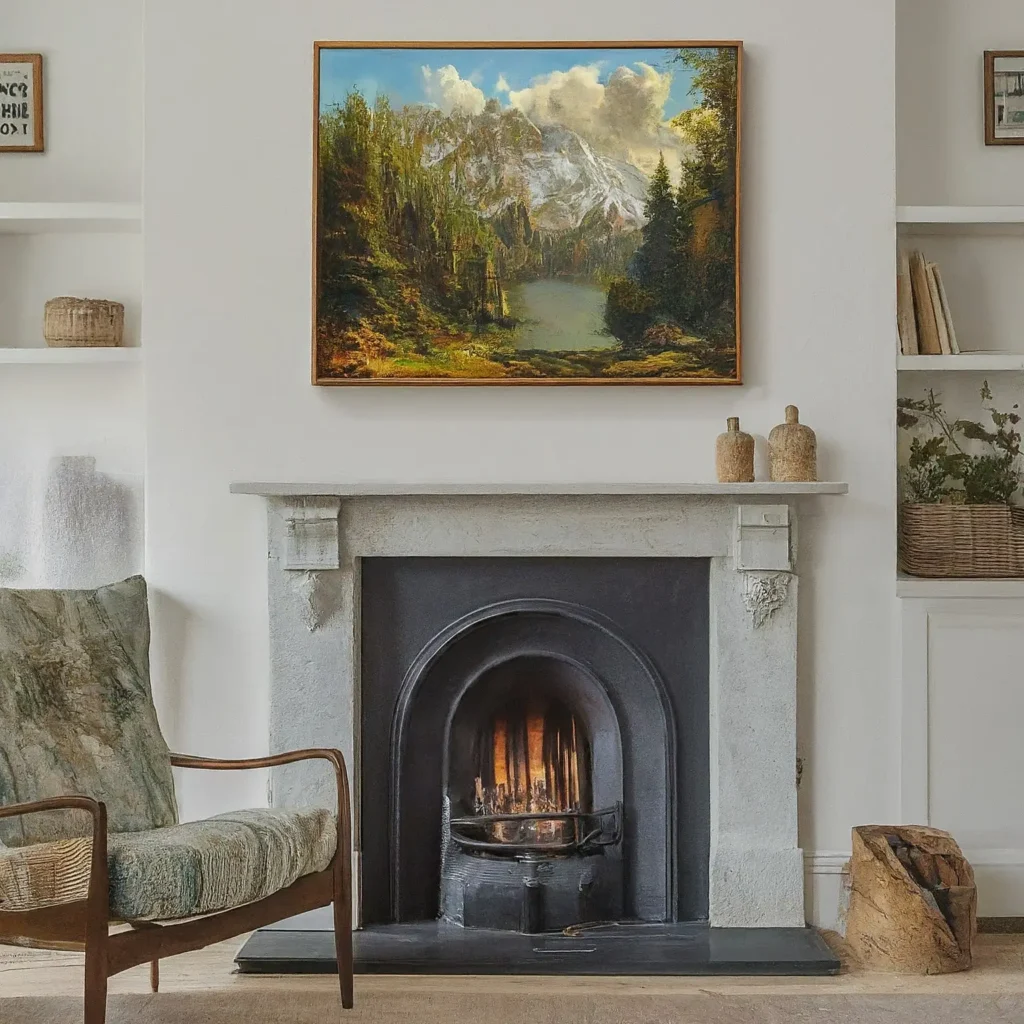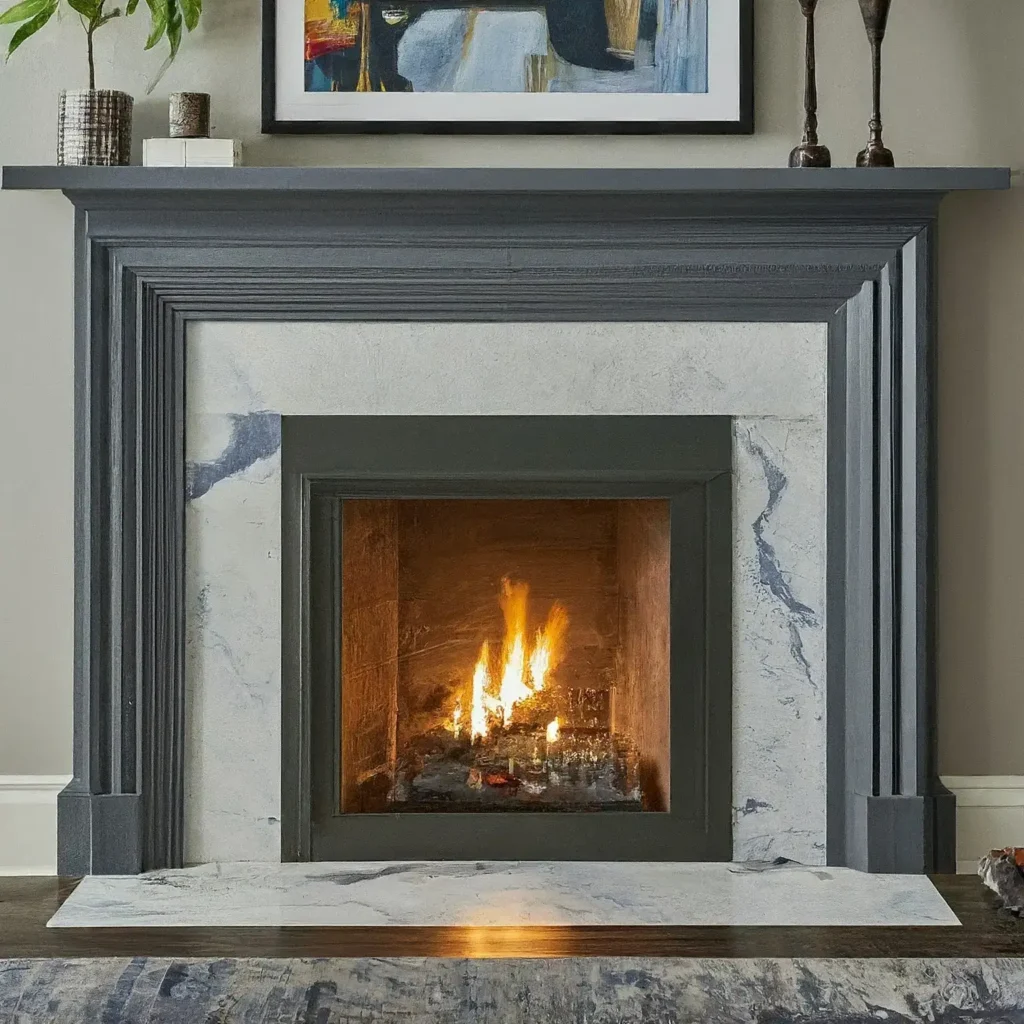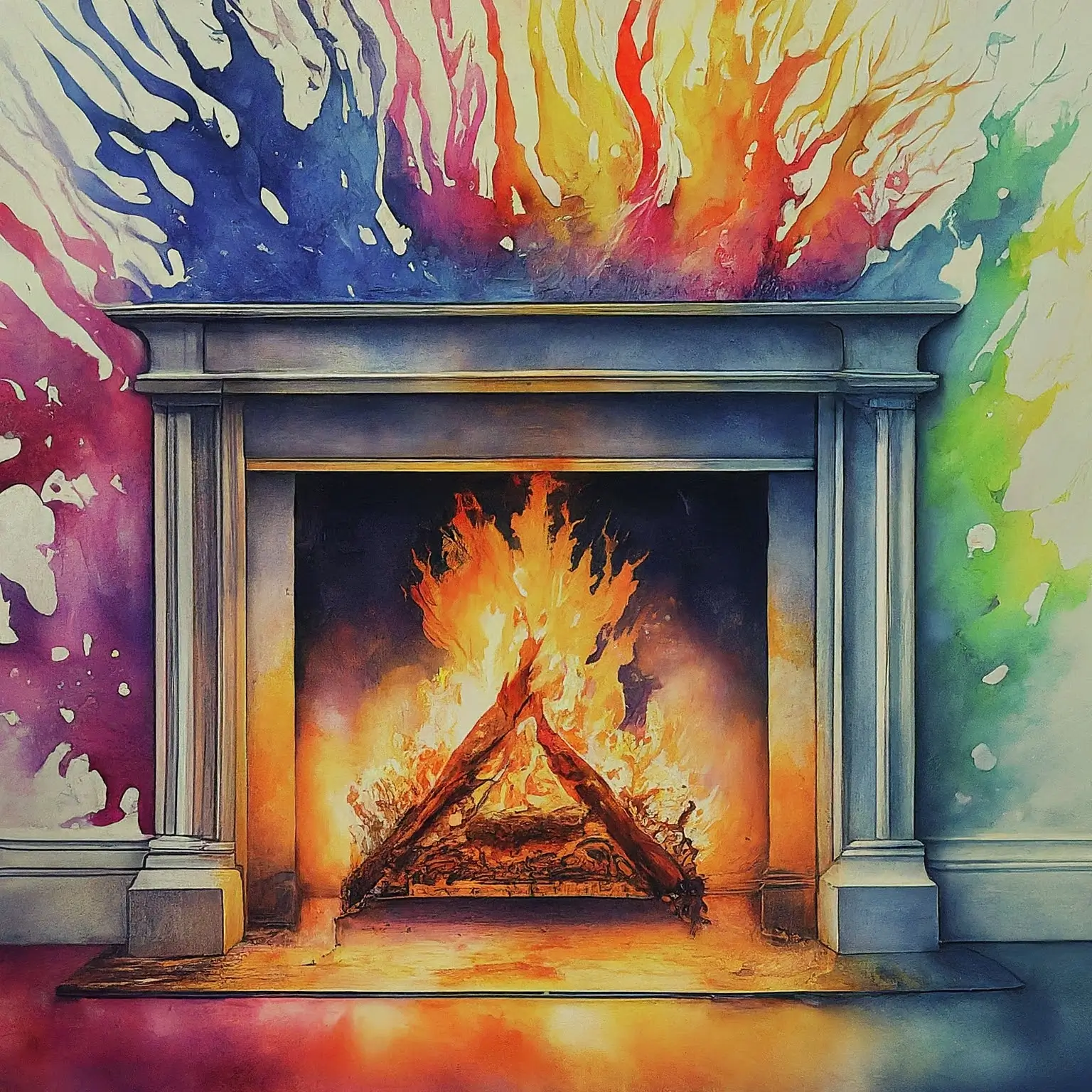Painting your fireplace is a great way to enhance the aesthetics of your home. However, choosing the right paint for both the interior and exterior of your fireplace can be confusing, given the various types and materials available in the market.

In this guide, we’ll explore whether using regular paint is suitable for different types of fireplaces, including gas, electric, and wood-burning options.
We’ll also discuss the specific materials like concrete, stone, steel, tile, or wood that may or may not be paint-friendly, helping you approach your next fireplace project with confidence.
Can You Paint A Fireplace With Regular Paint?
If you intend to use your fireplace, it is advisable to employ heat-resistant paint for interior and exterior surfaces. Regular paint is not designed to withstand the high temperatures (up to 1,500 degrees Fahrenheit) typically reached by most fireplaces. However, using regular paint is acceptable if you do not plan to utilize your fireplace for burning fires. In such cases, painting the firebox with regular paint is perfectly safe, as it won’t be exposed to extreme heat that could cause paint issues or emit toxic fumes.
Choosing the Right Paint:
Always opt for heat-resistant paint when using your fireplace, as it can endure temperatures between 1,200 and 1,500 degrees Fahrenheit. Most standard paints are not equipped to handle temperatures above 200 degrees Fahrenheit. Selecting heat-resistant paint ensures it won’t blister, chip, or emit toxic fumes when exposed to high heat. Consider the material of your firebox (brick, metal, or concrete) and choose a paint that adheres best to that specific surface.
What Kind Of Paint Do You Use To Paint A Fireplace?
For the exterior of most fireplaces, heat-resistant interior latex paint is recommended. Indoor latex paint formulations are designed to withstand temperatures ranging from 150 to 250 degrees Fahrenheit. Adding a paint primer can provide additional heat protection.
Conventional paints typically offer protection up to 200 degrees Fahrenheit. For the interior, opt for heat-resistant paint capable of withstanding temperatures up to 1,200 degrees Fahrenheit. Brands like Vitcas, Krylon, Rust-oleum, Sherwin-Williams, and Behr offer reliable options for heat-resistant paints.
Can You Paint A Gas Fireplace With Regular Paint?
Using regular paint on a gas fireplace is not advised, as gas fireplaces burn at approximately 1,000 degrees Fahrenheit. It is crucial to utilize heat-resistant paint specifically designed for gas furnaces on both the interior and exterior surfaces. The high temperatures reached in a gas fireplace make regular paint unsuitable for the job.
Can You Paint An Electric Fireplace With Regular Paint?
Electric fireplaces, which do not produce actual flames, can be painted. While they do generate some heat, most heat-resistant paints are compatible with electric fireplaces. It’s important to note that electric fireplaces are not typically designed for painting. If you choose to do so, focus on painting the surrounding area (e.g., wall or protecting TV stand) rather than the fireplace. Using heat-resistant paint is recommended due to the heat generated by electric fireplaces.
Can You Paint A Wood-Burning Fireplace With Regular Paint?
Applying regular paint inside a wood-burning fireplace is not recommended due to its limited heat resistance.
However, painting the fireplace surround with regular paint is acceptable, provided it has some heat resistance and is applied in conjunction with a paint primer. The type of paint required depends on the type of lining in your fireplace.
Brick-Lined Wood-Burning Fireplace:
For brick-lined fireplaces, opt for heat-resistant flat black paint capable of withstanding temperatures up to 1,200 degrees Fahrenheit. This type of paint is designed to minimize damage from flames, ensuring it doesn’t peel, crack, or blister.
Related: peel tiles

Metal-Lined Wood-Burning Fireplace:
Choose a heat-resistant paint formulated for adherence to metal surfaces for fireplaces with metal linings. Other paints may not last as long on metal surfaces. Prioritize applying a special primer to the metal to ensure even paint distribution and prevent oxidation, which can lead to rust and decay.
Can You Paint A Brick Fireplace With Regular Paint?
While a brick fireplace surround can be painted with regular indoor latex paint, using heat-resistant paint is the safer option. For the interior of the fireplace, heat-resistant paint should be the exclusive choice. Regular indoor paint can be used if you have no plans to use your fireplace. However, this means you won’t be able to use the fireplace in the future.
Conclusion:
While using leftover paint may seem like a cost-effective option for revamping your fireplace, it’s safer to exclusively use heat-resistant paint. Opting for a paint designed for high temperatures ensures it won’t deteriorate or release toxic fumes when exposed to the fireplace’s heat. If you do not plan on using your fireplace, regular paint can be applied to both the interior and exterior surfaces.


